Material Collection
Algae / Seaweed
Seaweed are large, multicellular marine organisms, also known as kelp or macroalgae, which have the potential to serve as a source of sustainable biomass for various materials. Likewise, single-celled marine organisms, microalgae, are also valuable as a biomass source for creating materials.
Algae have the advantage of not requiring arable land, which preserves essential land for food production. As they grow, algae use photosynthesis and absorb carbon dioxide, offering environmental benefits. Seaweed provides support for other marine life and plays a role in reducing ocean acidification. Additionally, due to their high oil content, microalgae can be harnessed as a replacement for petrochemical oil.
Below are a few examples of Algae/Seaweed products that meet our rigorous evaluation. For further help, scroll down to "Spec Guidance”.
Algae / Seaweed
10 products
About Our Collections
The goal of our collections is to help promote transparency in the material ingredients of building products by fostering knowledge and awareness of products and materials for which life-cycle information is available, and that have environmentally, economically, and socially preferable life-cycle impacts.
Keep an eye out for the following symbols:
A Healthier Affordable Building Product
Products with the designation of "Healthier & Affordable" were specified and installed in at least one of our Case Studies of healthier affordable housing.
Available at the Donghia healthier Materials Library
The Donghia healthier Materials Library library is open to Parsons student and faculty. Learn more about access and opening hours here.
Low Embodied Carbon
“Embodied Carbon” is the total amount of carbon emitted during the process of making a material. *HML refers to a manufacturer's EPD to determine whether a product's A1-A3 carbon emissions falls within HML's threshold for Low Embodied Carbon.
New Product
This product has been added to the collection within the past six months.
Product in Development
Products with this designation identify they are currently scaling or only available in markets outside of the building industry. they could be experimental or in use in capsule collections.
Available in the EU
Products with this designation are currently available only in the European Union and identified as being an exemplary healthy option in the respective product group.
Ingredient Disclosures
There are several ways of evaluating a material’s health that we include with product information. Disclosures are reports by manufacturers about product ingredients, impacts, or other attributes.
Key Disclosures include:
Health Product Declaration (HPD)
A voluntary technical specification for reporting information on product contents and associated health information, intended to be the health-analogue to Environmental Product Declarations (EPDs).
Declare Label
Declare is a transparency platform and product database that answers three questions:
1. Where does a product come from?
2. What is it made of?
3. Where does it go at the end of its life?
Environmental Product Declaration (EPD)
A standardized format for communicating the environmental effects associated with a product’s raw materials extraction, energy use, chemical makeup, waste generation, and emissions to air, soil, and water.
Safety Data Sheet (SDS)
A reporting format that provides basic information about a material’s chemical ingredients, the potential safety hazards to installers, and recommended practices for installation.
USDA Certified Biobased Product Label
Managed by the U.S. Department of Agriculture (USDA), the goal of the BioPreferred Program is to increase the purchase and use of biobased products.
Other
| Manufacturer | Product | Ingredient Disclosures |
|---|---|---|
| Keel Labs | Kelsun |
KelsunKelsun by Keel Labs is a compostable yarn made from readily abundant seaweed biopolymers. This product was designed as a sustainable, closed loop alternative for the apparel and footwear industries. Kelsun has been awarded the Hohenstein Environmental Impact Label. It contains 100% Biobased Content and have been awarded the USDA Certified Biobased Product Label in the BioPreferred® Program. CategoryTextile, AlgaeManufacturerKeel Labs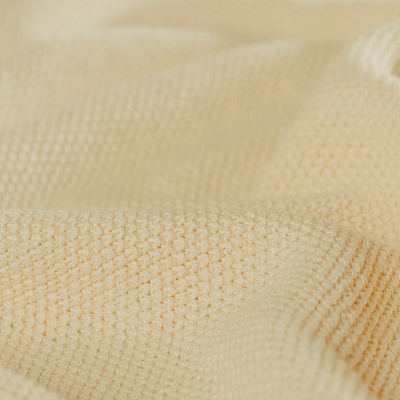
Material composition*kelp, seaweed, algae *as reported by the manufacturer COLORSred, seafoam green CERTIFICATIONS & DISCLOSURES
Health Product Declaration (HPD)
Declare Label
Environmental Product Declaration (EPD)
Safety Data Sheet (SDS)
USDA Certified Biobased Product Label
Other
Last UpdatedAugust 01, 2024 |
| Loliware | Loliware |
LoliwareAvailable At the Donghia Materials Library100% plastic-free, gluten-free, gelatin-free, BPA-free, non-GMO, all natural, non-toxic, safe, and FDA approved, LOLIWARE is made from a biodegr(edible) material so natural you can eat it. Loliware contains 100% Biobased Content and has been awarded the USDA Certified Biobased Product Label in the BioPreferred® Program. CategoryPackaging, AlgaeManufacturerLoliware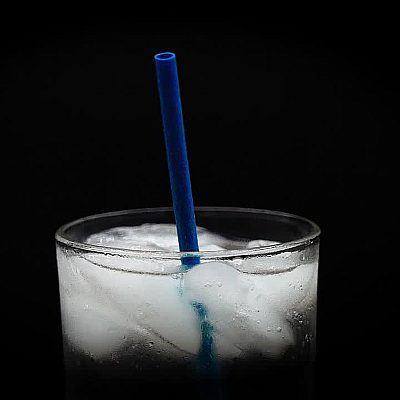
Material composition*seaweed, organic sweeteners and flavors and colors derived from fruits and vegetables *as reported by the manufacturer COLORSpink, yellow, green, beige CERTIFICATIONS & DISCLOSURES
Health Product Declaration (HPD)
Declare Label
Environmental Product Declaration (EPD)
Safety Data Sheet (SDS)
USDA Certified Biobased Product Label
Other
U.S Food and Drug Administration
USDA Certified Biobased Product Label
Last UpdatedDecember 16, 2025 |
| Agoprene |
AGOPRENE®
|
AGOPRENE®Available At the Donghia Materials LibraryProduct in DevelopmentAgoprene is a bio-based foam from Norwegian kelp, cellulose and crab shells sourced from waste streams. It can be used in upholstery and footwear and is shown to be biodegradable in soil. Note: A presumed foaming activator is unknown due to proprietary information. CategoryFoam, KelpManufacturerAgoprene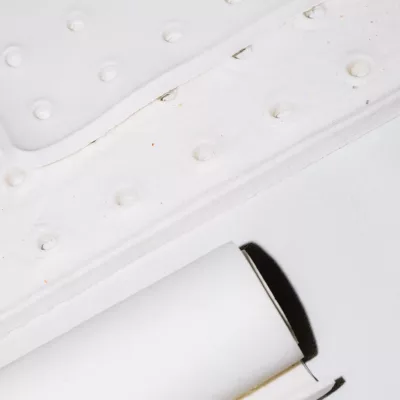
Material composition*Norwegian kelp, cellulose, crab shells *as reported by the manufacturer CERTIFICATIONS & DISCLOSURES
Health Product Declaration (HPD)
Declare Label
Environmental Product Declaration (EPD)
Safety Data Sheet (SDS)
USDA Certified Biobased Product Label
Other
Last UpdatedFebruary 25, 2025 |
| Sway |
Firstwave™ Film
|
Firstwave™ FilmProduct in DevelopmentSway's Firstwave™ Seaweed Windows are packaging material, made of a variety of globally sourced seaweed biomass. They contain 100% Biobased Content and have been awarded the USDA Certified Biobased Product Label in the BioPreferred® Program. They are used in combination with recycled kraft board for packaging boxes and are recyclable, as well as home and industrially compostable. CategoryPackaging, AlgaeManufacturerSway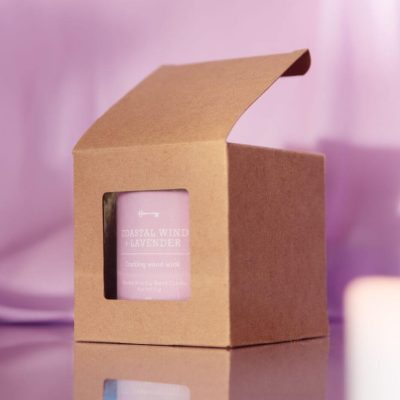
Material composition*seaweed, coconut starches, wheat starches, sugars , kraft board *as reported by the manufacturer CERTIFICATIONS & DISCLOSURES
Health Product Declaration (HPD)
Declare Label
Environmental Product Declaration (EPD)
Safety Data Sheet (SDS)
USDA Certified Biobased Product Label
Other
Last UpdatedNovember 12, 2025 |
| Notpla |
Food Container Packaging
|
Food Container PackagingProduct in DevelopmentNotpla creates food container packaging from cellulose with a coating of natural seaweed-based polymers. Their material is the first to be identified as "plastic-free" per EU Single-Use plastics directive standards, meaning it "does not require chemical modifications or petrol-based coatings to achieve grease and moisture resistance." It can be home composted or recycled. CategoryPackaging, AlgaeManufacturerNotpla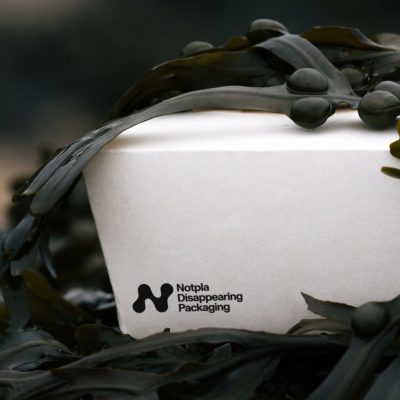
Material composition*seaweed, cellulose *as reported by the manufacturer CERTIFICATIONS & DISCLOSURES
Health Product Declaration (HPD)
Declare Label
Environmental Product Declaration (EPD)
Safety Data Sheet (SDS)
USDA Certified Biobased Product Label
Other
Last UpdatedMay 13, 2024 |
| Oceanium |
Ocean Ink®
|
Ocean Ink®Product in DevelopmentOCEAN INK is extracted from brown seaweed biomass for screen printing on packaging products. The ink naturally contains both the pigment and the binder, therefore does not require additives. It is 100% biodegradable and can accelerate compostability of PLA in 3D printing filaments. Available in gold and black ink. Oceanium promotes cold water seaweed farming and aims to utilize the majority of the biomass by utilizing different polysaccharides and proteins for various product applications. CategoryPigment / Biobased, SeaweedManufacturerOceanium
Material composition*Seaweed *as reported by the manufacturer CERTIFICATIONS & DISCLOSURES
Health Product Declaration (HPD)
Declare Label
Environmental Product Declaration (EPD)
Safety Data Sheet (SDS)
USDA Certified Biobased Product Label
Other
Last UpdatedJune 26, 2024 |
| Zeefier |
Zeefier
|
ZeefierProduct in DevelopmentAvailable in the EUZeefier is a textile dye which is 100% made of red, green and brown seaweeds according to the manufacturer. The seaweed is sourced from food and cosmetic industry waste streams or collected from commerical beaches. The pigment is extracted from the seaweed and can be applied to natural fabric such as cotton, wool, linen or silk. Zeefier colors are available as a paste or a liquid for industrial use in dyehouses. CategoryDye / Biobased, SeaweedManufacturerZeefier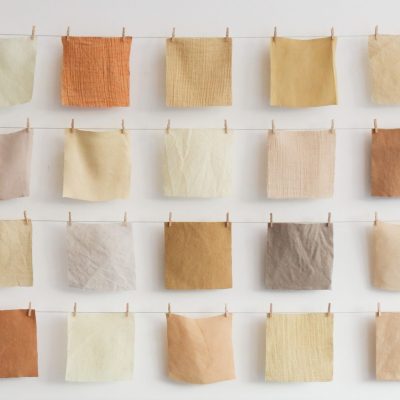
Material composition*100% Seaweed *as reported by the manufacturer CERTIFICATIONS & DISCLOSURES
Health Product Declaration (HPD)
Declare Label
Environmental Product Declaration (EPD)
Safety Data Sheet (SDS)
USDA Certified Biobased Product Label
Other
Last UpdatedJuly 02, 2024 |
| OTHER MATTER |
OM Signage Film
|
OM Signage FilmAvailable At the Donghia Materials LibraryProduct in DevelopmentOther Matter is a seaweed-based replacement for PVC / Vinyl window decals. They are designed for use in exhibitions, retail and event spaces. The decals can be repurposed and reused following each application. Per manufacturer, the material is 100% bio-based. All ingredients are edible. The stock colors are made from mineral pigments. CategoryDecal, SeaweedManufacturerOTHER MATTER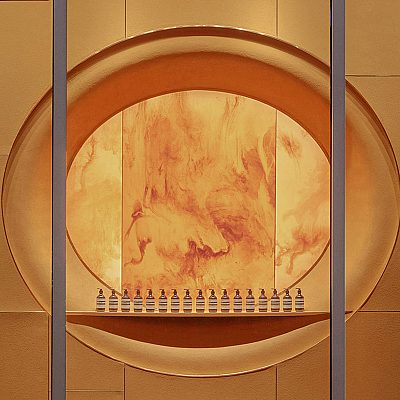
Material composition*Seaweed *as reported by the manufacturer CERTIFICATIONS & DISCLOSURES
Health Product Declaration (HPD)
Declare Label
Environmental Product Declaration (EPD)
Safety Data Sheet (SDS)
USDA Certified Biobased Product Label
Other
Last UpdatedDecember 15, 2025 |
| Revoltech |
MATTR™
|
MATTR™Product in DevelopmentMATTR™ is a bio-based textile material made from algae and a cotton backing. Other bio-based additives enhance durability, flexibility, and processing performance. MATTR™ contains no synthetic plastics or petrochemical-based binders, and is free of PVC or PU. It is in pre-commercial research and development stage. CategoryTextile, AlgaeManufacturerRevoltech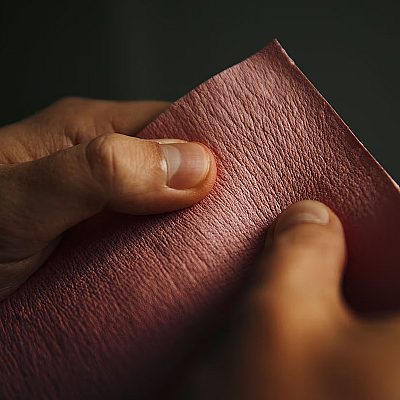
Material composition*Red algae, Cotton backer, Bio-based additives (oils, waxes, and naturally derived pigments or minerals) *as reported by the manufacturer CERTIFICATIONS & DISCLOSURES
Health Product Declaration (HPD)
Declare Label
Environmental Product Declaration (EPD)
Safety Data Sheet (SDS)
USDA Certified Biobased Product Label
Other
Last UpdatedDecember 15, 2025 |
| OceanMade |
Kelp Pots
|
Kelp PotsAvailable At the Donghia Materials LibraryProduct in DevelopmentKelp Pots are plantable seed-starters made from seaweed and recycled organic fibers. Kelp is a natural fertilizer which stimulates plant growth and builds resilient roots. 100% biodegradable. Does not contain any synthetic additives, resins, or petrochemicals. CategoryGarden Planter, SeaweedManufacturerOceanMade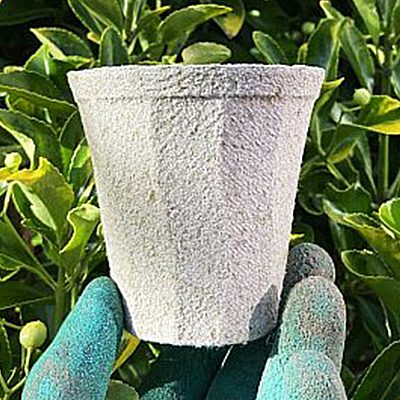
Material composition*Seaweed, Recycled Organic Fibers *as reported by the manufacturer CERTIFICATIONS & DISCLOSURES
Health Product Declaration (HPD)
Declare Label
Environmental Product Declaration (EPD)
Safety Data Sheet (SDS)
USDA Certified Biobased Product Label
Other
Last UpdatedDecember 15, 2025 |
The products in this collection have all been evaluated holistically for their contents and performance. To be considered, the product must also have a primary ingredient (by volume) that is derived or harvested from seaweed or algae that plays a critical role in the product’s performance or manufacturing avoiding additives harmful to human and planet.
The minimum bio-based content for the USDA Certified Biobased Product Label when not product category specific is 25%.
All products are evaluated for embodied carbon {kg of CO₂ eq /square meter) if (LCA) and (EPD) documentation is available. Those under 5 kg of CO₂ equivalent per square meter earn the HML Standard for Low Embodied Carbon (LEC) and are clearly marked.
Spec Guidance
Inquire with manufacturers for transparency and LCA information as much as possible. Materials new to the market may not yet have certifications and disclosures and often are made proprietarily.
Avoid algae-based materials which still contain petrochemicals in the product or in the manufacturing process.
Look for the USDA Certified Biobased Product Label in the BioPreferred® Program or ASTM 6866 to identify the percentage of bio-based content present in a product.
Opt for bio-based materials which are fully biodegradable. Bio-based does not necessarily ensure biodegradability.
Avoid products that are made using isocyanates as starting agents where possible.
Updated July 8, 2024
More Collections
Join Our Academic Network
Get Access to our carefully researched and curated academic resources, including model syllabi and webinars. An email from an academic institution or a .edu email address is required. If your academic institution does not use .edu email addresses but you would like to join the network, please contact healthymaterialslab@newschool.edu.
Already have an account? Log in